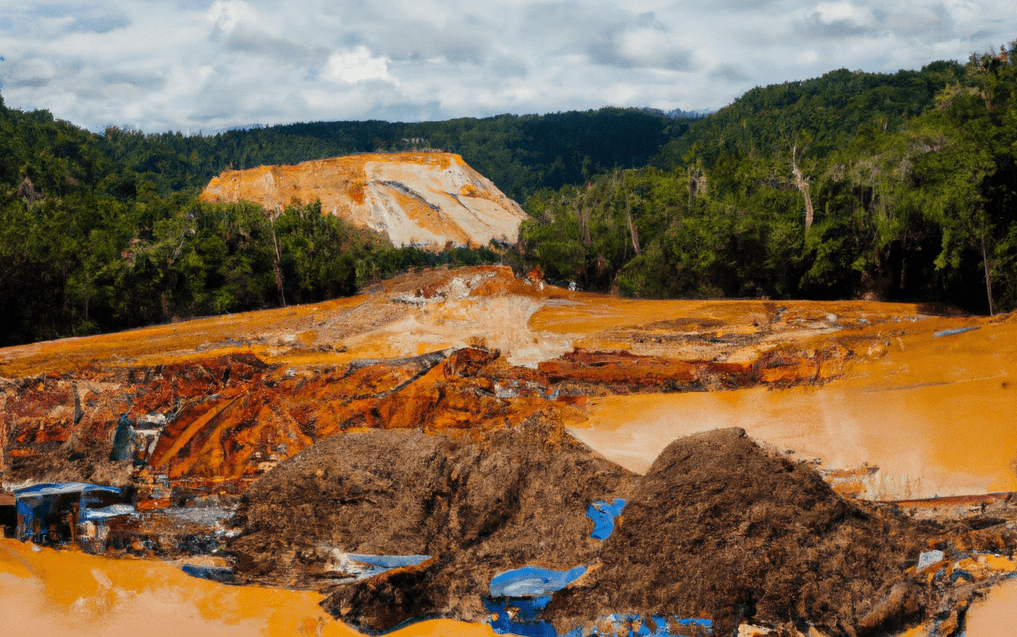
In a recent study published on January 26 in the journal Nature Communications, an international team of researchers demonstrates that illicit gold mining in the Peruvian Amazon is responsible for extraordinarily high levels of mercury contamination in the Los Amigos Biological Station, a patch of pristine Amazonian rainforest (Gerson et al., 2022).
The study found the pristine old-growth forest containing the highest quantities of mercury ever recorded, rivaling industrial regions where mercury is extracted. The birds of this area had up to twelve times the mercury in their systems compared to the birds from less contaminated locations.
The study led by Jacqueline Gerson, who conducted this research as part of her Ph.D., and Emily Bernhardt, professor of Biology, delivered the first measurements of air methylmercury deposits, the deadliest form of mercury.
Amazon Rainforest
The Amazon rainforest is the largest rainforest in the world, spanning 9 countries and providing vast amounts of biodiversity along with innumerable products that flow from it to the rest of the world. Unfortunately, illegal gold mining is quickly becoming a problem within this vital environment, and it is increasing the levels of atmospheric mercury – a toxic substance harmful to human health.
Illegal Gold Mining in the Amazon
Illegal gold mining in the Amazon is a growing problem, with miners clearing forests in search of precious metals and polluting rivers, streams, and the atmosphere with toxic chemicals. The large-scale operations power wash riverbeds with high-pressure water guns, exposing gold veins in the dirt beneath. In addition to gold, these miners are also seeking out diamonds and other valuable minerals.
Mercury Poisoning from Gold Mining
Illegal miners use mercury to extract gold particles from river sediments. Mercury binds to gold, generating pellets large enough to catch in a sieve. These pellets, when burned in open fire ovens, emit atmospheric mercury. The extreme heat separates the gold, which melts, from the mercury, which burns up. This mercury smoke ultimately ends up being deposited on the surface of leaves, inhaled directly into the tissues of leaves, or washed into the soil by precipitation.
The Study
Gerson and her colleagues used a massive slingshot to capture samples of air, leaf litter, soil, and green leaves from the tops of trees to measure the mercury. They concentrated their collection on four types of environments: wooded and deforested, close or remote from mining operations. Two of the wooded places near mining operations are patches of tiny, scraggly trees, while the third is Los Amigos Biological Station, an untouched old-growth forest.
Regardless of their distance from the mining activities, deforested regions that would have gotten mercury primarily by rainfall showed low amounts of mercury. Forested areas, which deposit mercury on and in their leaves, were not all the same. The mercury levels in the four regions with scraggly trees, two near mining activity and two further away, were consistent with global norms.
Gerson, currently a postdoctoral researcher at the University of California, Berkeley, said, “We found that mature Amazonian forests near gold mines take in more mercury from the air than any other ecosystem ever studied anywhere in the world.”
Gerson and her team measured the leaf area index in all forest areas. This parameter shows how dense the canopy is.
Study Results
The researchers found that the amount of mercury was directly related to the leaf area index. The more mercury a canopy holds, the more leaves it has. The canopy collects the gases and dust from the nearby burning of gold-mercury pellets.
The scientists monitored the mercury deposited in the feathers of three songbird species in reserve sites close and distant from mining activities to assess how much of the mercury collected in the forest canopy was finding its way down the food chain.
Birds from Los Amigos had three times as much mercury on average and up to 12 times as much as birds from a biological station farther away. With such high levels of mercury, these birds’ ability to reproduce could drop by up to 30%.
Significance
Mercury poisoning from gold mining not only affects the miners and the local population but can travel up the food chain and into the atmosphere, resulting in atmospheric concentrations of methylmercury that can harm aquatic life and human health. Inhaled mercury can also reenter the soil and surface water, further polluting these ecosystems.
Bernhardt said, “These forests are doing a huge favor by catching a huge amount of this mercury and keeping it from getting into the global pool of air.” “That’s why it’s even more important that they don’t get burned or cut down since that would send all that mercury back into the air.”
Gold mining was not something new or exclusive to this area, stated Bernhardt. He said, “A very similar thing, with very similar methods, has already been done throughout many of the world’s wealthy countries where gold was available. The demand is just pushing mining further into new areas.”
Gerson stated, “Because mining is a vital source of income, the objective is not to eliminate it, nor is it for individuals like us from the United States to impose answers or determine what should happen.”
“The goal is to highlight that the issues are far vaster than water pollution and that we need to work with local communities to develop ways for miners to have a sustainable livelihood and protect indigenous communities from being poisoned through air and water,” Gerson said.















If you wish for to increase your knowledge simply keep visiting this web page and be updated with the latest information posted here.